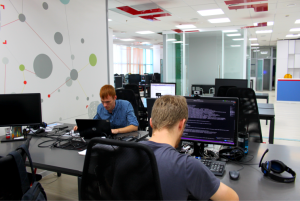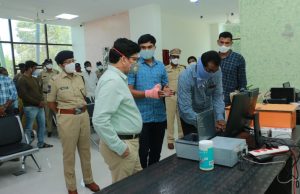The neural net implemented in the 9th version of our AFIS helped automate the stage of investigative work that is traditionally considered «manual», namely, verification of candidate lists produced by the system as a result of automatic searches.
AI performs the work of an expert incomparably faster and without errors caused by human factor. Only the final stage of analysis – verification of candidates proposed by NN – requires the expert’s participation. Each candidate is a true mate with a high degree of probability.
The officials of the fingerprint department of the Forensic Science Centre in the Crimea Ministry of the Interior confirm that PAPILLON-9-Neuro has allowed:
- labor saving at viewing candidate lists tenfold
- reduction of probability to miss a true mate
- identification of latents with true candidates located in those parts of candidate lists that are inaccessible for viewing, and thereby increase the effectiveness of the AFIS.
Owing to the software developed by PAPILLON, forensic experts of the Republic of Crimea obtained several high-profile identifications, which contributed to crime solution on the peninsula.
The new PAPILLON-Neuro software, which provides fast acquisition of additional identifications by latent prints, was created on the basis of deep learning neural networks for the analysis of candidate lists produced by the AFIS.
The PAPILLON-Neuro algorithms use additional features of the papillary pattern in comparisons. They work like operators when they are visually verifying candidates selected by the system.
PAPILLON-Neuro is looking through candidate lists to any preset depth (up to the 256th position inclusive), finding and offering the expert the most similar prints from NN’s point of view, the analysis of which is highly likely to result in identification.
PAPILLON-Neuro reduces manyfold the labor costs spent to analyze the visible parts of candidate lists, increases the reliability and accuracy of the AFIS in terms of identifying less informative, objectively tangled latents, finds true mates on positions invisible on the lists, allowing getting of results that are inaccessible to AFIS operators.
Processing of candidate lists created for arrays of unsolved latent prints with the use of PAPILLON-Neuro made it possible to obtain identifications:
- from invisible parts of candidate lists
- from visible parts of candidate lists, successfully found by the previous AFIS version, but not revealed by experts for a number of reasons: incomplete or delayed verification of candidate lists, latent and known prints were difficult for visual analysis, insufficient qualification of AFIS operators (special training on a system basis is needed for operators).
Related Posts

18.04.2023
Practical issues of choosing an effective AFIS
03.05.2023
PAPILLON develops cooperation with the Turkmen Interior Ministry
23.05.2023
PAPILLON enters the Asian IT market
03.03.2023
3DiVi teaches NN to monitor and manage order in cities
20.01.2023
3DIVI teaches students how to launch international IT projects
09.01.2023
PAPILLON scanners cover 80% of the police stations in Telangana state in India